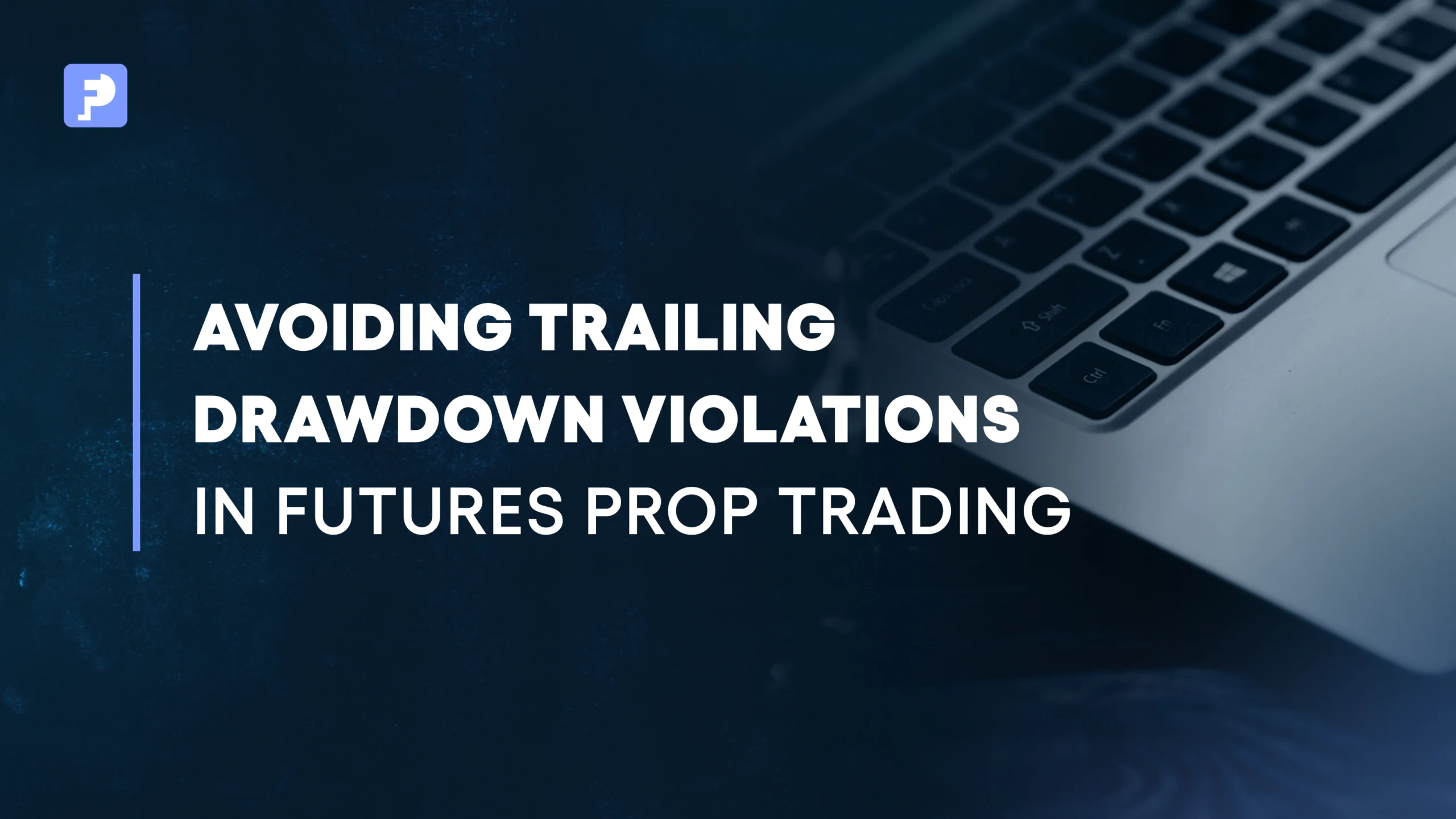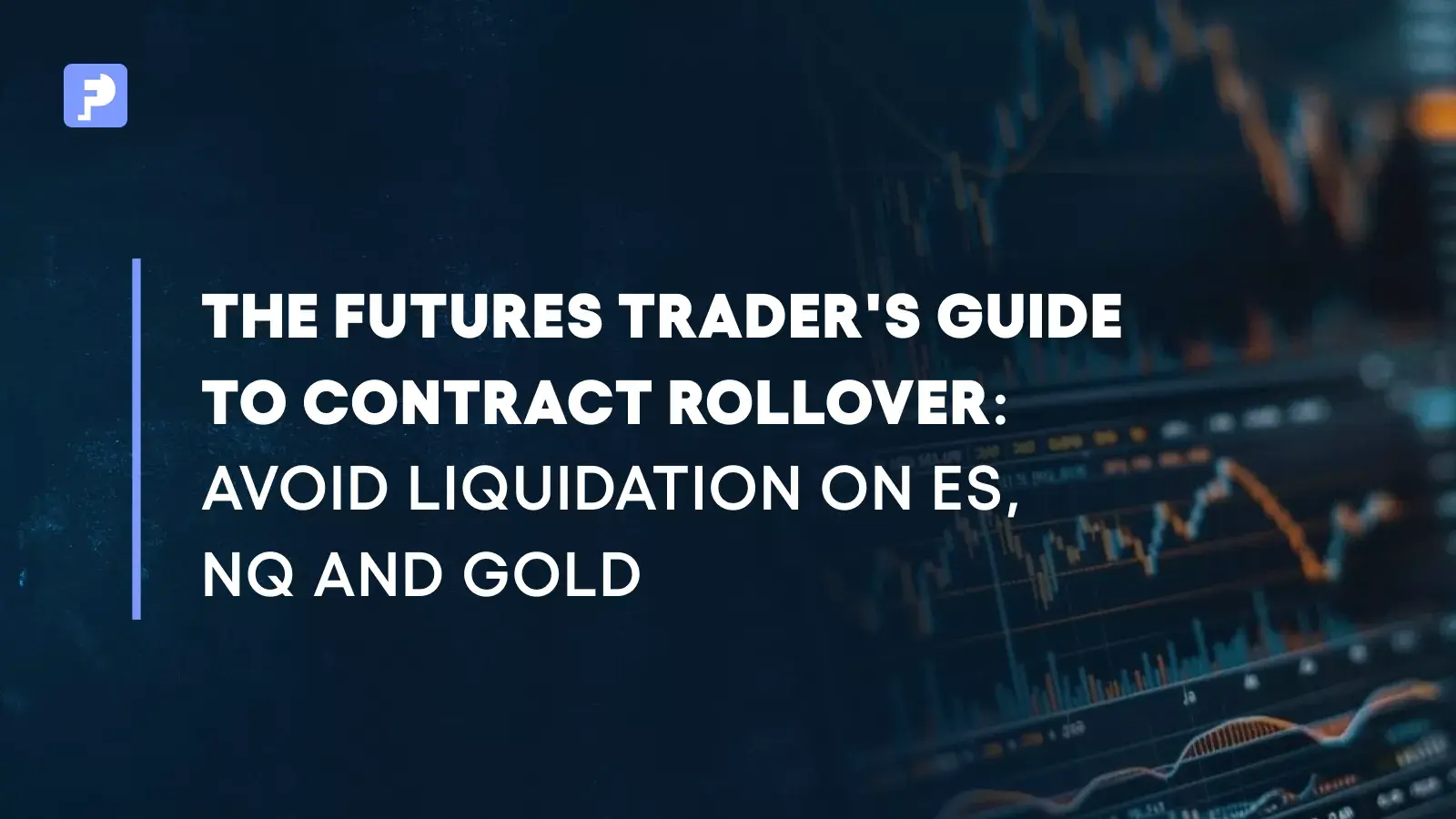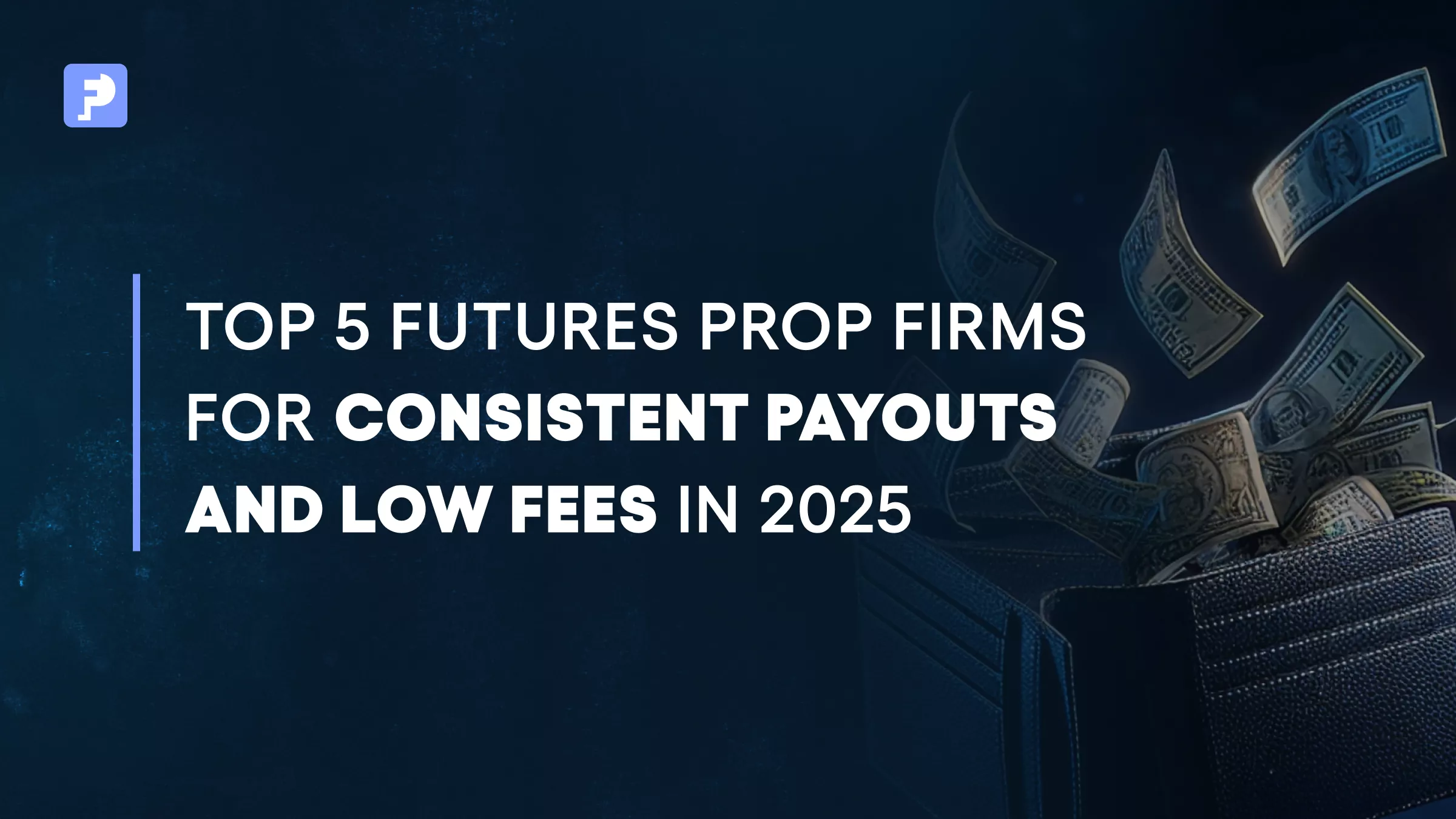
Avoiding Trailing Drawdown Violations in Futures Prop Trading
Introduction
In funded trading, many otherwise capable traders fail not because of strategy but because they breach trailing drawdown rules. If you trade with a prop firm, understanding trailing drawdown futures mechanics and building routines that respect them is essential for staying funded and scaling. This guide explains the rule, shows trailing drawdown calculation examples, compares trailing versus static drawdown, and outlines trailing drawdown strategies that work in a professional environment.
What Is Trailing Drawdown (and Why Does It Matter)?
A trailing drawdown is a dynamic equity limit that moves up as your account reaches new highest equity (often including unrealized gains) and never moves down when your equity falls. If your account equity drops to or below that moving limit, you violate the rule, and the account is closed per the prop firm’s trailing drawdown policies.
Example:
- Starting balance: $50,000
- Trailing drawdown amount: $2,000 below the highest equity
- Highest equity reached: $53,000 (including unrealized gains, if your firm counts them)
- New violation level: $53,000 − $2,000 = $51,000
- If your equity subsequently drops to $50,950, you break even, though you remain above your starting balance.
Prop insight: Many firms trail against real-time equity, not just closed P&L. This means large open profits can ratchet your drawdown level higher intraday. Know how your firm calculates it.
Trailing Drawdown vs. Static Drawdown
- Trailing drawdown (dynamic): Moves up with new equity highs; punishes giving back gains. It does not move down after losses.
- Static drawdown (fixed): A single, non-moving threshold (e.g., $2,000 below start). Once set, it doesn’t tighten after profits.
Why trailing is harder: It requires traders to protect profits as actively as principal. The more you gain, the tighter the room for error becomes relative to the new high-water mark.
How Trailing Drawdown Is Calculated (Step-by-Step)
Use this generic formula unless your firm specifies otherwise:
Trailing Drawdown Level = Highest Equity to Date – Trailing Drawdown Amount
- If the rule is “$2,000 below the highest equity” and your equity hits $60,000, the new violation level is $58,000.
- If the firm counts unrealized P&L, a spike to $60,000 that later reverses still locks the violation line at $58,000 even if you never closed the trade.
Checklist: confirm with your firm
- Does “highest equity” include unrealized gains?
- Does the trailing limit stop trailing at the starting balance (some firms stop trailing once the line reaches the start)?
- Does the firm evaluate at intraday marks or end-of-day?
Why Traders Breach Trailing Drawdown Rules
- Overtrading after early wins
Confidence spikes → size increases → modest reversal → violation. - Ignoring open-trade swings
Unrealized profit pushes the line up; a fast pullback triggers a breach. - No daily risk cap
Relying on firm limits only; no tighter personal guardrails. - Trading too close to the line
Beginning a session with minimal buffer leaves no room for variance. - Stacked correlation
ES + NQ + RTY exposure moves together; one move hits all positions.
Strategies to Avoid Trailing Drawdown Breaches
1) Build and Keep a Buffer
Operate as if the trailing limit sits $500–$1,000 closer than it is. After a strong session, reduce the size to protect the buffer you just created. Treat realized gains as “do not risk” until the buffer is large enough.
2) Set a Personal Daily Loss Cap
Implement a personal daily max loss of 30–50% tighter than the firm’s limit. This preserves the trailing buffer when conditions are choppy.
3) Size by Volatility, Not Conviction
Let ATR, event risk (e.g., CPI/Fed), and liquidity drive size decisions. In higher volatility, reduce contracts or widen stops and reduce contracts so your expected adverse excursion fits your buffer.
4) Respect Correlation
If you trade multiple indices (e.g., ES + NQ), treat them as one risk bucket. Either trade one at a time or proportionally reduce the combined size to keep worst-case swings within the buffer.
5) Lock in Profits with Partials and Pauses
If your equity has made a new high intraday, consider partial exits or smaller add-ons. A short cool-off period after hitting a session target prevents giving back gains that have moved the line up.
6) Use Bracket/OCO Orders
Automate exits to prevent hesitation. Brackets enforce defined risk-to-reward and keep drawdown usage predictable during fast markets.
7) Start the Day with a Plan for the Line
Write the current trailing level before the session starts, alongside anticipated volatility scenarios. Decide in advance what max open risk you will allow relative to that line.
Trailing Drawdown in a Prop Environment (FunderPro Focus)
In a professional prop firm, trailing drawdown exists to protect trader longevity and firm capital. It is aligned with:
- Daily loss limits (don’t rely on the last line of defense, keep personal caps tighter).
- Scaling plans (consistent protection of the line unlocks larger allocations).
- Exposure standards (instrument-level size, correlation controls, and event-time constraints).
See Leverage Management in Futures Trading for position sizing methods that preserve your trailing buffer.
Summary: Your Trailing Drawdown Playbook
- Know exactly how your firm calculates the highest equity and whether unrealized P&L counts.
- Pre-compute your current trailing level each day; plan risk around it.
- Build, then defend, a profit buffer.
- Size to volatility and correlation, not emotion.
- Use personal loss caps that are tighter than firm rules.
All trading in FunderPro Futures takes place in a demo-style environment and in off-exchange futures.



